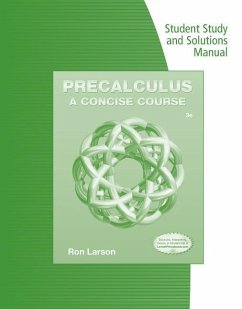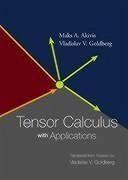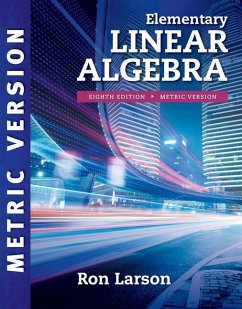
Easy Pre-Calculus Step-By-Step, Second Edition
Versandkostenfrei!
Versandfertig in über 4 Wochen
23,99 €
inkl. MwSt.

PAYBACK Punkte
12 °P sammeln!
Get the knowledge and skills you need to solve pre-calculus problems with confidence! >The quickest route to learning a subject is through a solid grounding in the basics. Rather than endless drills, this accessible guide presents an original, step-by-step approach to help you develop a better understanding of pre-calculus topics. You'll find important concepts linked together by clear explanations, invaluable exercises, and helpful worked-out problems. Once you've mastered the topics in this book, you will find yourself well-equipped to begin your calculus studies. >This book features: ¿ A n...
Get the knowledge and skills you need to solve pre-calculus problems with confidence! >The quickest route to learning a subject is through a solid grounding in the basics. Rather than endless drills, this accessible guide presents an original, step-by-step approach to help you develop a better understanding of pre-calculus topics. You'll find important concepts linked together by clear explanations, invaluable exercises, and helpful worked-out problems. Once you've mastered the topics in this book, you will find yourself well-equipped to begin your calculus studies. >This book features: ¿ A new Trigonometry chapter that will round out your pre-calculus studies ¿ Clear explanations that break down concepts into easy-to-understand steps ¿ Stay-in-step "pop-ups" offering helpful advice and cautions against common errors ¿ Step-it-up skill-building exercises linking practice to the core steps already presented ¿ Worked-out solutions to all exercises that reinforce understanding of concepts >










![Solutions of the More Difficult Exercises and Examination Papers in the Canadian Edition of Hamblin Smith's Arithmetic [microform] Cover Solutions of the More Difficult Exercises and Examination Papers in the Canadian Edition of Hamblin Smith's Arithmetic [microform]](https://bilder.buecher.de/produkte/66/66124/66124068n.jpg)
![First Lessons in Arithmetic [microform]: Comprising an Easy and Expeditious Method of Acquiring the Fundamental Rules, and of Enabling the Pupil to Pe Cover First Lessons in Arithmetic [microform]: Comprising an Easy and Expeditious Method of Acquiring the Fundamental Rules, and of Enabling the Pupil to Pe](https://bilder.buecher.de/produkte/66/66142/66142116n.jpg)
